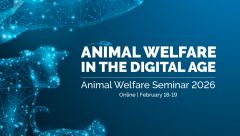-
-
- Don’t forget small companion animals during hot weather! 17 Dec 2025
- When wellness meets welfare: the hidden cost of puppy yoga 10 Dec 2025
- From snout to tail, there’s more to pigs than meets the eye 11 Nov 2025
- Habitat Lost, Future at Risk: What’s Threatening Koalas Today? 23 Oct 2025
- The importance of a safe and stimulating environment for cats 9 Oct 2025
- Providing an optimal life for your companion animal 8 Oct 2025
- Crocodile farming; luxury goods at a cruelty cost 25 Aug 2025
-
- Pre-eminent Sybil Emslie Animal Law Scholarship recipient announced 19 Nov 2025
- Help animals find their home by supporting RSPCA’s double donation day 2 Oct 2025
- RSPCA selects new partner to deliver RSPCA Pet Insurance 1 Sep 2025
- The ‘Pyjama King’ Peter Alexander celebrates 20 years of RSPCA support with a one-day-only fundraiser 4 Aug 2025
- RSPCA Australia welcomes stronger protections for animals and victim-survivors of domestic and family violence 13 Jun 2025
- RSPCA extends a million thanks as the curtain falls on the Million Paws Walk 23 May 2025
-
- Season 4, Episode 10: Greyhound racing 16 Dec 2025
- Season 4, Episode 9: Cat management 3 Jul 2025
- Season 4, Episode 8: Stories from the RSPCA Inspectorate 26 Jun 2025
- Season 4, Episode 7: Animals used in research 19 Jun 2025
- Season 4, Episode 6: Preventing dog bite incidents 12 Jun 2025
- Season 4, Episode 5: Animals caught in domestic violence 5 Jun 2025
-
-


















